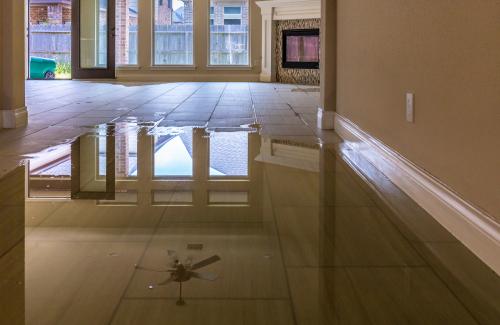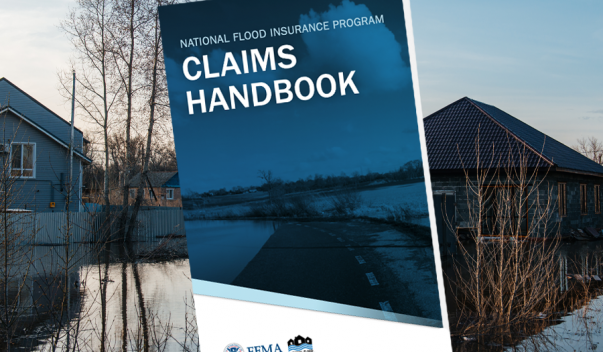How to start a flood insurance claim
When a flood happens, the National Flood Insurance Program is here to help. Start your flood insurance claim as soon as you can.

What to know about starting a flood insurance claim
-
Start your flood insurance claim as soon as possible after a flood
-
An insurance adjuster will come to your property to view your flood damage and create a claim estimate
-
It can take 4-8 weeks before a claim is finalized and paid
-
If your claim is denied, you can work with your insurance agent or appeal to FEMA
Flood insurance claims payments help people recover
$68K
Between 2016 and 2021, flood insurance policyholders received an average of $68,000 per claim.
$300M
NFIP policyholders in New Jersey received over $300 million in claims after Hurricane Ida in 2021.
$2.9B
River and stream flooding causes $2.9 billion in damage each year.
Don’t forget to apply for disaster assistance too
Flood damage can also qualify you to receive federal disaster assistance if the president officially declares a disaster. You can apply for this aid in addition to your flood insurance claim, which may help with uncovered expenses, such as temporary housing assistance.
Helpful information about flood insurance claims
-
Know who’s on your side
Image
Use the NFIP Claims Handbook for details about making claims and what to do before and after a flood.
-
Get detailed claims information
Image
Fraud after a disaster is common. Scammers may pose as government agents or insurance adjusters.
-
Appeal a denied claim
Image
Getting a denial letter isn’t the end of your claim. You can work with your insurance provider or appeal directly with FEMA.
FAQS about flood insurance claims
Make sure your flood insurance adjuster shows you their driver’s license and Flood Control Number. Their Flood Control Number confirms they’re authorized to work on claims for the NFIP and your insurer. Ask them to provide you with their professional contact information, too.
Your adjuster will:
- Answer questions about your claim
- Give you the Claims Handbook, and describe the NFIP flood claims process
- Explain what an advance payment is, if applicable
- Discuss your policy's coverage and limits
- Submit a recommendation about your loss to the insurer, with supporting documentation
- Confirm the name of your current mortgage holder
- Ask for a current mailing address and phone number if you are displaced
- Discuss the availability of Increased Cost of Compliance Coverage, if you are eligible
Document your flood damage as soon as possible after the flood and before your insurance adjuster arrives. Take pictures and videos of flood-damaged property, especially high-value items or things you may need to throw away like carpet.
Once you’ve documented damage, immediately throw away flood-damaged items that could pose health risks such as perishable food, clothing, carpets and pillows.
Do your best to minimize mold growth and spread. Standard NFIP policies do not cover mold damage.
Maybe. Basements receive limited coverage under NFIP policies. What's covered will depend on what type of flood insurance coverage you have.
If you have building coverage, certain basement items are covered if they are connected to power and installed. This includes central air conditioners, light switches and outlets, furnaces and sump pumps.
If you have contents coverage, basement items are covered if they are connected to a power source. This includes washers and dryers, window air conditioners and freezers.
Your flood insurance policy covers only physical damage directly caused by a flood. A simple way to identify flood damage is to ask yourself where the water came from: Was it from the ground up, or top down?
An NFIP policy covers damage from water entering your home from the ground up. This may be due to storm surge, flash flooding, heavy rainfall or the overflow of a body of water.
NFIP policies also cover damage from mudflow. Mudflow is a river of liquid and mud on normally dry areas. Mudflows are common after wildfires.
However, an NFIP policy does not cover damage from water entering your home from the top town. This includes rain that's blown into your home by wind or comes in from the ceiling because of a damaged roof.
FEMA allows advance payments on flood insurance claims during major flood events. Your provider may offer up to $5,000 without an adjuster's visit, official documentation or FEMA's authorization. With authorization and documentation, you may get up to $20,000.
The advance payment will be deducted from your final claim payment.
Contact your flood insurer’s claims department. They will connect you with a claims examiner to discuss disputed amounts or coverage issues.
You can appeal your claim if some or all of it is denied, or if you disagree with your claim amount. There are several options for your appeal, including talking to your adjuster or insurer, filing an appeal with FEMA or filing a lawsuit.
Policyholders in special flood hazard areas (SHFA) can get up to $30,0000 to help bring their home or business into compliance. This is called Increased Cost of Compliance Coverage.
